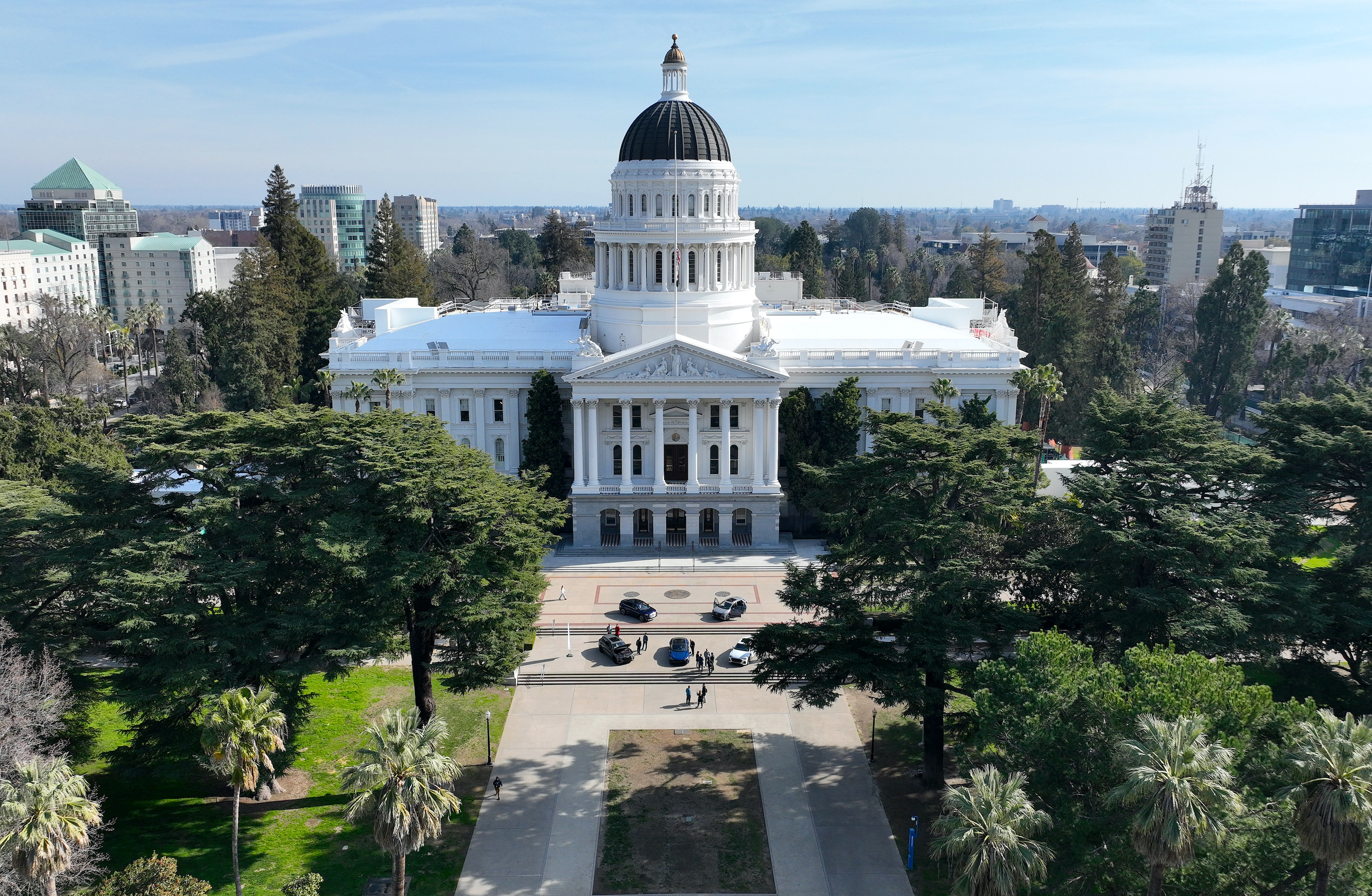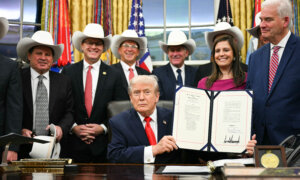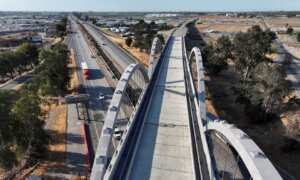The California Air Resources Board (CARB) voted on Nov. 8 to amend the state’s low carbon fuel standards, a move that some say could raise gasoline prices by up to 65 cents per gallon, although regulators suggested that the effect would be less significant.
In a 12–2 vote, board members approved amendments to strengthen air quality regulations intended to incentivize investment in alternative vehicle power sources, such as electric, hydrogen, and biofuels, that could replace traditional fossil fuels.
Whether the amendments will affect the price of gas in the state, and if so by how much, is a contentious point of debate among regulators and lawmakers.
“Californians have had enough—we already pay the highest gas prices in the nation, and they are about to get much higher,” California Senate Minority Leader Brian Jones said in a statement emailed to The Epoch Times. “It’s time to rein in CARB’s unchecked power, starting by revoking the federal waivers that allow them to do whatever they want, whenever they want without the consent of Californians who pay the price for their political agenda.”
He called the changes “a direct assault on hardworking Californians” and said the timing of the meeting—three days after the election—was a tactic meant to limit media coverage and attention.
A September 2023 assessment from the air board anticipates an effect ranging from no change to 47 cents per gallon in 2025 and up to $1.50 per gallon in 2031.
Some critical of the proposal said those effects would be detrimental to industries in the Golden State.
“Tacking on 50 cents would be crushing to small businesses,” Tim Taylor, legislative director for the National Federation of Independent Businesses, a nonprofit representing small and independent companies nationwide, told the board. “The downstream economic impact on the entire supply chain could be staggering ... [and] exacerbate economic woes of our small business owners.”
Some analysts predicted even higher prices because of the stricter rules.
Danny Cullenward, an attorney and the vice chair of California’s Independent Emissions Market Advisory Committee, authored a paper published on Oct. 7 by the University of Pennsylvania’s Kleinman Center for Energy Policy. The paper projected additional costs reaching as high as 65 cents per gallon in the coming year, rising to 85 cents per gallon by 2030 and nearly $1.50 per gallon by 2035.
One Republican lawmaker showed up to testify during the public comment portion of the meeting while urging a no-vote.
“We care about the environment. ... We also want clean air,” Assemblyman Tom Lackey said. “But this is also about survival, financial survival.”
Pointing to analysts’ estimates that fuel prices could rise sharply in the coming years, he said many working-class Californians would face fiscal challenges.
“We simply cannot afford that,” Lackey said. “Please don’t drive us into bankruptcy.”
The newly approved resolution cites unnamed “third party commodities markets experts” who estimate pass-through costs of up to 10 cents per gallon because of the fuel standards.
Steven Cliff, executive officer for the air resources board, told board members that “no causal relationship” exists between the low carbon fuel standards and gasoline prices.
One board member pushed back on that notion and said that if regulations were made more stringent, prices would inevitably increase because oil companies’ compliance costs would likely be passed to consumers.
“How can we, in all good conscience, say we’re not the cause of it?” Dean Florez, board member and former state Senate majority leader, said during the hearing.
He also questioned why so many industry representatives spoke in favor of the amendments during the meeting.
“It seems like all of these oil companies support the LCFS [Low Carbon Fuel Standard], and it seems like their cousins in these other states also support the LCFS,” Florez said. “If we’re worried about the oil companies, they'd be more worried about why they support this particular policy.”
The effects of regulations are difficult to measure, according to the proposal, as the price of fuel is affected by a complex set of variables and market forces outside the control of state agencies.
A need to identify and mitigate any potential effects is noted in the document.
Nearly 200 public commenters offered their opinions in person and online in the meeting, which lasted more than 12 hours and finished after 9:30 p.m.
Many were opposed to the amendments, with critiques coming from those critical of price increases and from environmental justice groups who felt the rule changes could harm ecosystems.
Others, including dozens of energy and oil companies and some clean air advocates, expressed support for the amendments.
Board member Davina Hurt said it was a “hard decision” but called the proposal “life-saving regulations” before voting for the amendments.
“The health of our communities is not negotiable,” Hurt said during the meeting.
Estimates provided by the board predict that the new regulations will lower greenhouse gas emissions by at least 30 percent by 2030 and 90 percent by 2045—compared with 2010 levels—while also reducing particulates and other air pollutants, according to a summary of the proposal included in the agenda for the meeting.
Board members wrote in the summary that the changes would benefit zero-emission investments, help provide revenue for transit projects, and support marginalized communities.
The amendments are also meant to “send clear, long-term market signals ... that are needed to achieve deep emissions reductions in the transportation sector while supporting the broader portfolio of zero-emission vehicle regulations and climate statutes.”
“The proposed amendments both signal a limited future for all combustion fuels and incentives for zero emission fuels and infrastructure to leverage federal incentives and grow those sectors,” the summary reads.
One board member said the group is tasked with developing and implementing unprecedented policies while mitigating effects on consumers.
“We have a duty to support working families with the cost of living,” Eric Guerra said during the hearing.
He said that the changes would help the market become more competitive, which he said would lower prices.
During the meeting, Guerra led efforts to add statements to call for reviews every six months for three years, and if they were to reveal significantly higher gas prices, the policies would be brought back to the board for consideration.
Implemented in 2009 after it was established by the passage of Assembly Bill 32 in 2006, the low-carbon fuel standards program has helped triple the amount of low-carbon transportation fuels in the state, according to the board’s agenda summary.
Subsequent legislation updated the standards with stronger regulatory policies. For example, in 2022, California Gov. Gavin Newsom signed several climate bills, including AB 1279, which “requires an 85 [percent] reduction in anthropogenic GHG emissions below 1990 levels by 2045,” according to CARB.
More than 13,000 Californians signed a petition asking regulators to delay the vote until clear information about gas price effects was made available.
“Californians deserve to be fully informed before any policy amendments that could further drive up the cost of living are enacted,” the petition reads. “We deserve transparency from our government, and we should know how much more we will be paying before any amendments are approved that further increase the financial burden on consumers.”
The new rules are set to take effect in January 2025.














